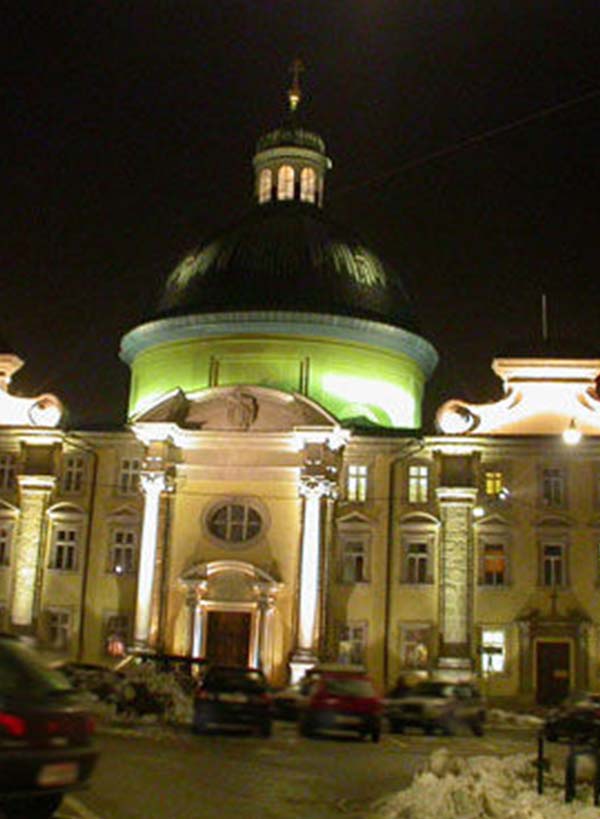The Church of St. Cajetan
Acquired in 1591 by Archbishop Wolf Dietrich
The construction history
In 1923 the church and the monastery were handed over to the Order of the Brothers of Mercy
A master builder was quickly found in Gaspare Zugalli and plasterers in the brothers Francesco and Carl-Antonio Brenno and Antonio Carabelli. However, when the client Max Gandolf died in 1687, the construction of the Kajetanerkirche was stopped. It was only under Archbishop Johann Ernst von Thun that the church was completed in 1696 and consecrated in 1700. In 1809, the Salzburg branch of the Theateriner Order was abandoned and the Kajetan church almost fell into disrepair. In 1923, the church and monastery were given to the Order of the Brothers of Mercy, who made efforts to repair them. During the Second World War, the building served as a military hospital and was damaged by bombs in 1944, after which it was restored.

In 1591, Archbishop Wolf Dietrich purchased a hospital and church in today’s Kaiviertel for the establishment of a seminary. This was to be under the direction of the Theatine Order (Cajetan), founded in 1524 by St. Cajetan and Pietro Caraffa. In 1685, the latter was brought to Salzburg to establish a branch here. Shortly thereafter, it was decided to build a church including a monastery on this very spot in the quay district.
Architecture and interior
With the Kajetanerkirche the Italian baroque arrived in Salzburg
The broad, palatial façade treats the church and monastery as a unified building complex. It is backed by a mighty transverse oval dome, which makes the sacred character of the complex visible. The interior of the church looks very festive, distinguished and clear due to the stucco. The light-giving dome dominates the room, in its mighty round a fresco depicts the Assumption of St. Cajetan into Heavenly Glory. The altarpiece on the high altar of the Church of St. Cajetan shows the martyrdom of St. Maximilian. Built into the gallery parapet above the vestibule is the oldest surviving organ in Salzburg, built around 1700 by Christoph Egedacher.
A special feature of the Church of St. Cajetan is the Holy Staircase, built in 1712 as an imitation of the Scala Santa in Rome, which may only be climbed on the knees. Even today it recalls the baroque forms of piety.





